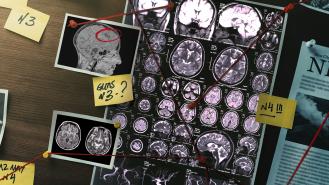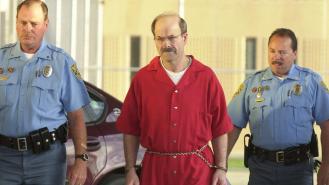
Son of Sam: 8 bizarre facts about David Berkowitz | The impact of his crimes
Between 1976 and 1977, a killer terrorised the city of New York. Given the nickname the ‘Son of Sam’, over two years David Berkowitz murdered six people and wounded seven others.
His victims were largely young women, often with long dark hair parted in the middle, although he also targeted couples. So great was his reign of terror, that many dark-haired women at the time began dying their hair. It also had a huge impact on wig sales.
But it’s a case that’s been riddled with bizarre details from the beginning, including the theory that Berkowitz might not even have been solely responsible for the murders.
These are some of the most peculiar details that continue to dog the Son of Sam case.
1. The many childhood head injuries
Following in the paths of other infamous killers, David Berkowitz also suffered childhood head injuries. But when it came to Berkowitz, it wasn’t just the single injury he sustained. The first occurred at the age of seven when he was hit by a car. He later compounded the injury when he ran straight into a wall. On another occasion, he was also hit in the head with a pipe.
2. He was a prolific arsonist
Before he turned to murder, Berkowitz was a young fire starter. From the age of 12, he set at least 1,488 fires, the details of all of them were recounted in his journal. He watched firefighters put out his blazes and fantasised about bodies being carried out.
3. He said his neighbour’s dog was talking to him
Was it a cunning plan to get an insanity plea at trial or was Berkowitz really suffering from hallucinations? In his confession, Berkowitz revealed to police that a dog made him do it.
Berkowitz claimed that Harvey, a black Labrador who lived next door, was possessed by an ancient demon and was forcing him to commit the murders. However, this was debunked by psychiatrist David Abrahamson, who claimed Berkowitz’s account of the demons changed too often to be credible. Clearly, he was capable of controlling his impulses.
Berkowitz also recanted the demonic confession from prison.
4. The Hall & Oates connection
It wasn’t only the dog that Berkowitz claimed was pushing him to kill people. During police investigations, he said the song ‘Rich Girl’ by Hall & Oates also motivated him to commit the series of murders. Daryl Hall first heard about this claim when he read an interview with Berkowitz.
However, as the song was released in the middle of his killing spree, this is questionable. At any rate, it later inspired the band to write ‘Diddy Doo Wop (I Hear the Voices)'.
5. Son of Sam and John Wheaties
Much like the Zodiac Killer, Berkowitz left letters for the police confessing to the crimes. It was in these letters that he gave himself the moniker, Son of Sam, despite his father not being called Sam.
On the other hand, Sam Carr was his next-door neighbour (and the owner of the chatty dog) and had two sons, John and Michael.
Son of Sam wasn’t the only possible name Berkowitz gave to the police, either. Another option was John Wheaties. John Carr’s nickname? Wheaties.
6. Contradictory evidence
Although Berkowitz originally claimed he acted alone, he later changed his story in prison and claimed he wasn’t solely responsible for the murders. There were plenty who already thought that was true and Berkowitz was simply a convenient arrest for the NYPD, ending the public fear that surrounded the case.
Journalist Maury Terry, who worked extensively on the Son of Sam case, never believed that Berkowitz was the true killer. For starters, Berkowitz didn’t look like the eyewitness descriptions of the killer. There didn’t seem to be a pattern. There were gaps in Berkowitz’s own story. Then there was the fact that the handwriting changed between different Son of Sam letters.
Plus, some clues potentially pointed to other people, like the Carrs, for example. The literal sons of a Sam. The letters also mentioned the abuse that John and Michael suffered at the hands of their father.
However, as the murders seemed to end after Berkowitz’s arrest, possible evidence of others’ involvement wasn’t investigated.
7. The Satanic cult
Berkowitz later claimed from prison that he was part of a Satanic cult, one that the Carrs had introduced him to. Maury Terry had also found evidence of this, including a site near Berkowitz’s home, in a park known for its occult-related activity, that had Satanic markings on the walls and held the body of a dog.
Maury even connected the murders to other crimes related to the occult.
Furthering the Carr connection, in a letter from prison, Berkowitz also called Sam Carr ‘Sam, my Lord’ and ‘Papa God’.
Both Carr brothers suffered sudden deaths following Berkowitz’s arrest. John Carr died after being shot in the head. He was found in his girlfriend’s apartment. Originally, she said it was suicide, before claiming that actually, it was murder and related to the Son of Sam investigation. His brother, Michael, also died a year and a half later in a car accident.
8. He has a Christian following
Despite the Satanism and the fact he was a Jewish serial killer, Berkowitz converted to Christianity from prison and even inspired a following. Much of it has to do with the number 44, the calibre of Berkowitz’s gun that led to the police’s nickname for him, the ‘.44 Caliber Killer’. His followers claim he’s an apostle of the Lord.
Berkowitz himself acts as a pastor within prison, gives interviews to Christian radio stations and produces videos. His past connection to Satan only furthers his devotion, as he claims to know Satan’s tricks and says that he’s after him.
How the Son of Sam transformed American media
Triggering fear and fascination in equal measure, the Son of Sam case had a major impact on the media and helped cement the position of Rupert Murdoch in the United States. Having purchased the
This was partly motivated by the desire to beat rival tabloid the Daily News, which had scored a major coup by running a front-page story on a letter the police had recovered from a crime scene in which the killer announced the nickname ‘Son of Sam’. The News had also received a letter directly from Berkowitz, which was fodder for several days of articles.
Not to be outdone, Murdoch instructed his staff at the Post to escalate their coverage of the Son of Sam and get as much media juice out of the case as possible. The ever-escalating sensationalism led to one columnist at Murdoch’s paper accompanying the parents of two Berkowitz victims as they attended the hospital to visit their critically injured child. The Post published an article on the ’13-and-a-half-hour vigil’ and then invited the killer to give himself up to the newspaper itself.
Of course, the feeding frenzy around the case continued well after the killer was captured, with the Post running reams of emotive articles in the weeks that followed. Several journalists – including some from more ‘respectable’ outlets – were even arrested after attempting to break into the Son of Sam’s home to lay their hands on anything that could yield a story. The Post managed to get hold of some of Berkowitz’s old love letters, leading to the stark headline: ‘How I Became a Mass Killer’.
It's now generally agreed that the race to capitalise on the Son of Sam case ushered in a new era of super-sensationalist journalism in the US, spearheaded by Rupert Murdoch. The magnate had already employed this approach to powerful effect in Australia and the UK, and the Berkowitz saga proved to be an entry point for such tactics across the Atlantic.
While some more stately papers like the New York Times decried what they saw as a prurient interest in crime stories, the profitability of the approach was undeniable, and the ramifications led directly to the hasty assembling of the Son of Sam Law.
What is the Son of Sam Law?
What links the Son of Sam, the gangsters in Goodfellas, and the notorious ‘fake heiress’ Anna Delvey? The answer is a piece of legislation that was swiftly enacted in the wake of David Berkowitz’s reign of terror, popularly known as the Son of Sam Law.
The media glare that was shone on the much-feared killer caused authorities to worry he would sell his story and reap a profit from his bloody spree. So, the state of New York passed a new law. It required that any profits generated from creative ventures like books or movies based on criminals’ exploits would be effectively confiscated by the state and used to pay any legal judgements awarded to victims.
Dozens of other US states enacted their own similar laws to stop criminals from making money from misdeeds. In the ensuing years, the legislation would be enacted a handful of times in New York, most notably in connection with John Lennon’s killer Mark David Chapman.
But then came the 1985 publication of Nicholas Pileggi’s book Wiseguy, which told the story of mobster Henry Hill and later inspired the iconic Martin Scorsese movie Goodfellas. The publishing house Simon & Schuster was ordered to hand over its profits to the state, but refused on free speech grounds, and claimed the legislation contravened the First Amendment of the US Constitution. The battle between the parties went all the way to the US Supreme Court.
The court took the publisher’s side, stating that the Son of Sam Law was overzealous and had overreached by applying to any creative work featuring a criminal’s thoughts ‘however tangentially or incidentally’. It also noted that, had it been in existence, the Son of Sam Law would have confiscated payments related to works by people either convicted of crimes or who merely recounted breaking the law, such as the The Autobiography of Malcolm X, Henry David Thoreau’s Civil Disobedience, and even Confessions by Saint Augustine, who admits to committing ‘past foulness’ such as nicking pears from a ‘neighbouring vineyard’.
The ruling led to revisions being made to Son of Sam laws in the US, although the legislation has continued to be the subject of controversy in the decades since. It made the news again in connection to Anna Sorokin, better known as Anna Delvey – the high society fraudster who conned her way into New York’s most exclusive circles and whose story has been the subject of articles, books, documentaries and the Netflix drama Inventing Anna.
The Son of Sam Law was activated with regard to the Netflix deal, freezing the con artist’s profits and shunting the money to pay restitution to some of the banks which Delvey had defrauded.
Somewhat ironically, the Son of Sam Law was never invoked in relation to David Berkowitz himself, but it remains an unlikely legacy of his terrible crimes.













